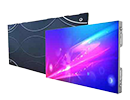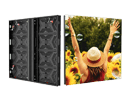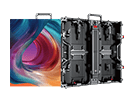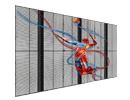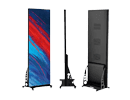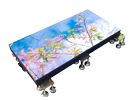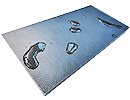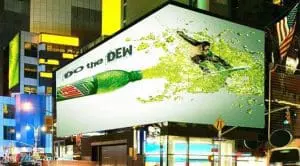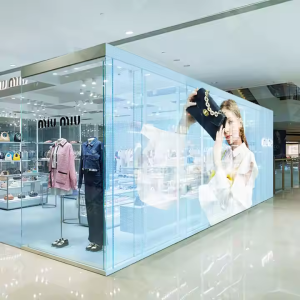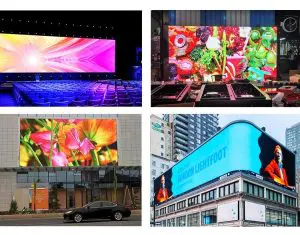Ultimate Guide for Stage LED Screen
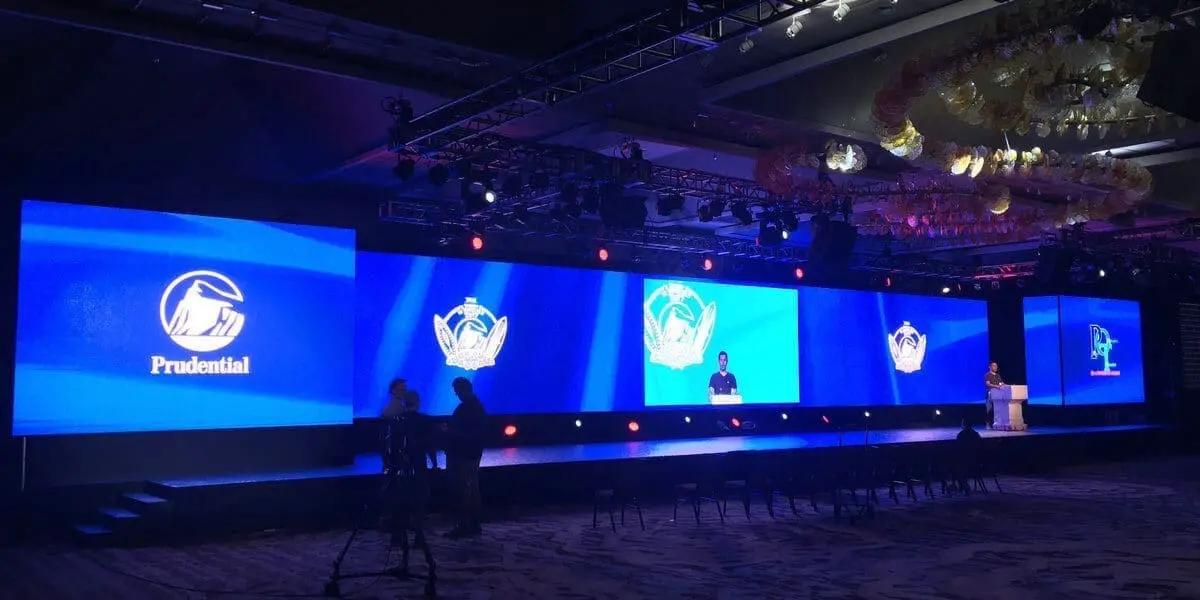
What is LED Display?
LED Display (light-emitting diode display) is a screen display technology that uses a panel of LEDs as the light source. Currently, a large number of electronic devices, both small and large, use LED display as a screen and as an interaction medium between the user and the system. Modern electronic devices such as mobile phones, TVs, tablets, computer monitors, laptops screens, etc., use a LED display to display their output.
Types of LED Displays
The common points of fixed LED screen and Rental LED screen deserve to be highlighted. We can divide whatever fixed and rental LED display screens into two types: outdoor and indoor. And you can choose the right one regarding their properties.
Outdoor – Outdoor LED screen has the function of preventing rain, sunlight, dust, lightning and is temperature resistance. Outdoor screens shine brighter and are more durable than indoor screen. They also tend to have a lower pixel density and be designed for farther away viewing distances.
Indoor – Indoor LED display module is typically modular and has higher resolution and usually owns fine pixel pitch to meet the requirements of close viewing distance. It do not need to shine as bright as outdoor screen and do not need to be as durable as it because of the installation site.
What is more, there is a kind of LED display whose properties are between the above two. It is usually installed in the eaves, open hall, outdoor canopy and so on. Although performs the same high brightness as outdoor LED screens, it doesn’t withstand rain, wind, sand, etc.
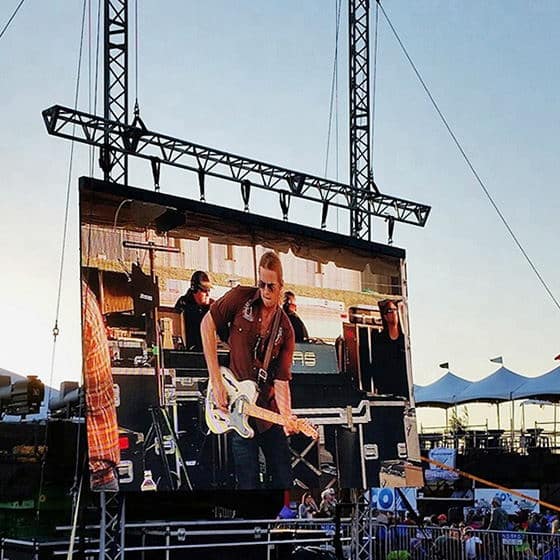
LED Stage Screen
LED stage display can be a great option for you to impact your customers and audiences with comparative low cost and high efficiency, improving your profits and brand image.
Whether you are arranging a community event, trade show, fashion show, sporting competition, or a campaign, your event can take help from an stage LED screen. With the most recent cutting-edge technology, LED video panels have become more reliable, quick to set up, and more reasonable.
In large stage performance, LED screen manufacturer design and production are an innovative study that incorporates video clipping, special effect production, and 3D technology, which improve the stage performance style and enhance the visual effect of stage performance. In a large concert hall, gigantic video walls can deliver spectacular images that will brighten the show.
Enhance your event with LED stage screen
Choosing stage LED screens for the indoor or outdoor event has got the norm because of the extraordinary features of infinite customizable display size, enhanced image displace projectors, and LCD screens with LED video panels in auditoriums, control rooms, broadcast studios, and board rooms.
There is no doubt that the stage LED screens can create striking environments that will surely excite your audience. Familiarity, technical proficiency, and proper scheduling are necessary, it is important to create an impression.
How to Choose a Rental LED screen
There is a wide-ranging variety of LED stage screens. Opting the right product for your venture could be a difficult task and requires knowledge of many technical aspects of the gear, venue, and audience. Here you will get answers that would facilitate you to make the best guide to choose led display.
1.The indoor or outdoor venue
Outdoor LEDs are waterproof and usually bright enough to be used during daylight. Indoor LED screens are generally smaller pixel pitch for better definition experience.
2.Temporary or permanent installation
LED cabinets for permanent installations are less expensive because of efficient hardware design, but they need more time for installation as compared to rental cabinets.
3.Screen size and pixel pitch
This is analyzed according to venue dimensions, aspect ratio, and audience size. Initially, figure out the physical limitations – ceiling height, stage depth and width, distance from the screen to the first row of seating. The rule of thumb for estimating the perfect pixel pitch is 5 feet per millimeter. In this way, with 4mm pixel pitch your minimum viewing distance is about 20 feet. If you are in a theatre and the first row is nearly 25 feet from the LED screen, you should prefer an LED screen with a pixel pitch of 5mm or smaller.
4.Media resolution and aspect ratio
LED displays are made of LED panels that come in various sizes and shapes. Most often the norm panel size is 500 x 500 mm. The screen aspect ratio is usually determined by the media type to be played and the physical constraints of the venue.
For a stage LED screen, you may understand that the finest screen size for your venue should be 40 feet by 10 feet that are a 4:1 aspect ratio. In this situation, you would want to offer the media creators with the accurate dimensions and pixel count of your screen for customized media design.
5.Power requirements
A classic LED panel takes about 100 Watts. At 110V circuits, it is equal to 1.1 Ampere. If you have a screen built of 150 LED panels, the power requirement is 165A.
6.Lighting and reliability
LED screens have high brightness of greater than 800 nits. It is intended for high illumination. Stage LED screens can be displayed in a well-lit theatre or on a showroom floor. It is great for outdoor as well as the indoor stage background.
In terms of reliability, LED screens are energy-efficient and cost-effective, have a long life of greater than 50,000 hours.
Stage LED screen rental vs. Own
Whether to buy an rental LED screen or rent can be a tough decision to make. The LED screen is a substantial investment. Initially assess the need, estimate the cost of purchase versus LED screen rental and create an action plan.
If your project is a permanent installation, you have a budget, room for storage, and mindset for repeat use, procuring gear may be the correct choice.
Here are some tips on how to choose the size of LED stage screen
Go with a stage led screen format (16:10 or 16:9). The industry is slowly leaving 4:3 format. Going with 4:3 tends to give you something of an old-fashioned look, to begin with. If you previously have that, do not be in a rush to go widescreen–it may not be worth the price.
If you aim to use your system to display more than just song lyrics, you should target a screen height of 1/6 to 1/10 the distance from the screen to the back row. In other words, if the distance from the stage led screen to the back row is 60 feet (18 meters), then the screen height must be 6-10 feet (1.8-3 meters). The width is calculated by the aspect ratio; so, if you use 16:10, you would have a screen marginally of 9.6 x 6 feet (2.9 x 1.8 meters) or a maximum of 16 x 10 feet (4.8 x 3 meters). In general, many sources felt that 1/8 was an acceptable size.
Create Memorable Digital Experices
Stage LED screen is an extremely efficient application for the high-effect visuals that a video wall installation requires. The picture is obvious, the assimilation is flexible, and the hardware is more reasonable than ever. The technology has come a long way in the last 10 years and if it persists to grow, LEDs stand to be the most dominant digital signage hardware on the market.
In modern times, stage LED screen layout and production in stage performances are taken more seriously. It not only gives the background atmosphere for the performance but also turns out to be part of the stage performance. The subject condenses the workflow of LED digital image design and production in stage performance.
After days of continuous discovery and practice, stage performances have gained powerful experience and accomplishments with the application of the LED stage screen.
Customize Your LED Display
Keep in touch
Ultimate Guide for Stage LED Screen
What are the top ten LED display screen factory in Shenzhen
What is the difference between LED screens and LCD screens?
Why is LED display screen bead chip important
What are the installation methods for rental LED screens
How to install indoor LED display screen
How do LED displays contribute to achieving visual excellence?
How much does the material of LED display screen affect the quality
How to choose high-quality rental LED screens

